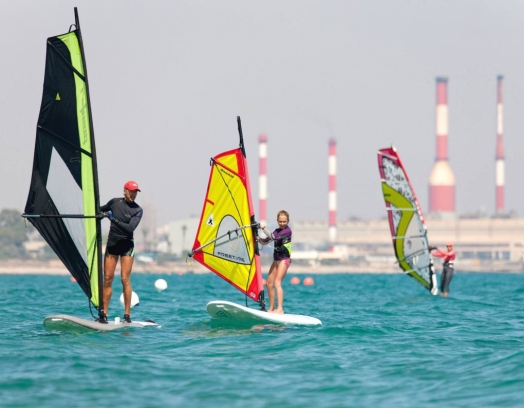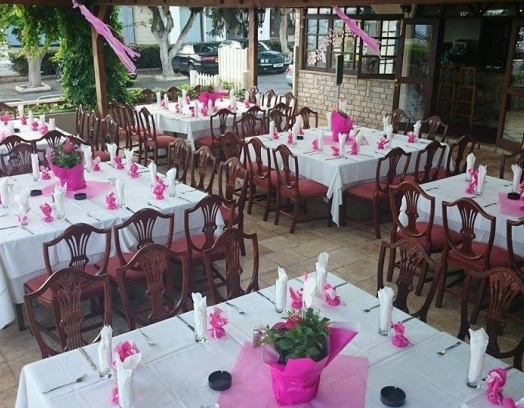The culture of Turkish Cypriots includes a wide variety of folk dances that assimilate into their choreography various cultural influences, which we have already spoken about in our article.
Their traditions have become unique and original, having come from Turkish traditions, throughout the 500 years of existence in Cyprus as close-knit neighbors, and interactions with the Greek, as well as from those people that left their mark on the island. In different regions they have different names and styles.
We will see them performed by professional groups and even amateurs, and we will hear the beautiful and catchy melodies.
Folk Music
Cypriot-Turkish folk music consists of a rich variety of local tunes that have experienced significant influence from mainland Turkish music. Historically, it was formed around the tradition of weddings, a primary public gathering at that time: a violin, zurna, a cylindrical drum called a “darbuka” (it is played with both hands), large drums called “davul”, as well as an accordion, and a mandolin. All of these instruments were widely used in meetings at which people sang traditional songs (many of them shared with the Greek Cypriot community), and, of course, danced.
The songs were used not only for entertaining guests and numerous relatives of young people at weddings, but also in other special occasions, and at local Muslim festivals and celebrations (bayrams, circumcision ceremonies, and wrestling matches), during which the “Ince Saz” musicians played. In addition to the instruments listed above, they performed music with the participation of a tambourine and cymbals.
-
Cypriot-Turkish folk music represents two groups of musical works: “turkuz” (türküz, meaning “purely Turkish”) and “oyun havaları”, a.k.a. “outdoor games”. This results in a musical accompaniment of folk dances, games, and entertainment during the wedding.
Folk celebrations, like any other community or family holiday in the part of Cyprus occupied by Turkey, always begin with the dancing of men. Moreover, if Turkish Cypriot men are ready to dance constantly, for any occasion (from a wedding to the harvest festival) and everywhere (at home, in a rural square, or even in coffee houses), then Turkish Cypriot women, as a rule, restrict their public dancing to weddings!
Folk dances of the part of Cyprus occupied by Turkey are usually accompanied by musicians, playing on traditional instruments like the zurna, a traditional reed instrument with sounds characteristic of Middle Eastern musical culture. They also play on two types of drums: a small darbuka, which is played with both hands, and a larger one, davul, which is hit with a stick. The violin, and other instruments, such as the accordion and mandolin, are often used.
Furthermore, among türküs, a special place is occupied by the folklore composition “Dillirga” [1]. The dance itself can be seen here:
Another example, the song “Kebapçıların şişi”:
This is another symbolic song, important to the Turkish Cypriot folk tradition, called “Portakal atışalım” (“Let’s Throw Oranges at Each Other”). Here are the words:
“You come from there, and I will be here.
Meet me in Cyprus...its fruits are wonderful. I dream of having this girl as my own…”
See here.
-
For musical traditions and the development of local culture as a whole, the creative activity of one outstanding woman was of great importance.
Let’s talk about it a little more…
Kamran Aziz (1922-2017) is a famous musician and composer [2], the first woman in the part of Cyprus occupied by Turkey to be such.
Ms. Aziz has made an invaluable contribution to the development of Cypriot-Turkish folk music, highlighting it in a separate independent genre in its modern sense. She was one of the first female musicians to start playing in public, and became the initiator of Western music teachings and playing, in collaboration with her colleague, Jale Derviş.
At the same time, she wrote other “Eastern” music, with elements of Arabic, such as this amazingly beautiful composition, “Al Yemeni”:
At the age of 8, a young Kamran began to study the piano. Later on in life, she continued her studies at The Nicosia American Academy.
Aziz began her musical broadcasts on the British War Radio in 1945. She bgan translating classical opera and other works into Turkish that same year, a few years before similar broadcasts took place in Turkey!
Aziz created the musical group, Kâmran Aziz ve Arkadaşları (Kamran Aziz and Her Friends) in 1950. The artists performed live on the radio, and then on the Cyprus Broadcasting Corporation TV until 1963. They performed popular songs, as well as famous operatic arias (translated into Turkish), instrumental works by composers, such as Schubert, and others…
Dance
Before we talk about the fact that the Turkish Cypriots have long been dancing, it is worth briefly dwelling on the local culture and the peculiarities of the national dress: after all, we have already talked about folk costumes and the traditional clothes of the Greek Cypriots here.
The colorful costumes worn by folk dancers in the part of Cyprus occupied by Turkey fully reflect the origin of their dance and music culture, originally from Turkey, and more precisely, from Anatolia (a peninsula in Asia Minor). After all, it was there that the trousers (or salvar) were the most recognizable element, based on the choice of color, brightness (on women) and dark tones (on men) prevailed, and in terms of silhouette — slimness, and, at the same time, layers.
Women traditionally wear colorful hats. Sometimes these are fez, tinkling with monists and draped with a scarf, embroidered with gold or silver thread. The main, and most integral accessory (or even ‘piece’ to) a Turkic costume from any region is a scarf.
In the part of Cyprus occupied by Turkey, folklore dance dresses (or, as they are called in Turkey, “entari”) are either white with embroidered patters, or colored; with high cuts, embroidered sleeves, and a deep neckline in front.
The length, as a rule, is up to the knees, in combination with a sophisticated yuchetka skirt. Women’s folk dress also includes a shirt — “gömelek”, a vest — “yalek”, or “inchik”, if oversized.
The image is made complete by shoes (made of leather) on a low sole, and a sash belt made of decorative fabric.
Men wear a white shirt, tucked into black trousers, or with white shawls (tapered down, as worn by women), knee-length, and belted with a wide red or checkered, homespun sash. All of this can be seen in combination with blue or red embroidered vests and red fez.
Most often, dancers are shod in high black boots or in soft shoes without heels.
As accessories, participants in folk holidays in the part of Cyprus occupied by Turkey use, like in olden days, pocket watches on a chain and shawls!
-
Let’s get back to our “northerners’” dances. Thematically, they are divided into five groups:
- Movements and habits of animals and birds (Karta — an eagle hunts).
- Ordinary life and special events in the life of a person and Community (Biçak (Kasap) Oyunu — two guys skin an animal; Orak — dance with sickles; Sirto — there are several local types: Iskele Sirtosu, Aziziye Sirtosu, Kına Sirtosu, Seherli Sirtosu, Karagözlü Sirtosu, Feslikan — a joint youth dance using scarves; Dolama — women’s dance at a wedding).
- The relationship between a man and a woman (Kozan — wedding; Degirmenci — the girl tries to seduce the miller; Sandala-Mandala — a humorous duel of the groom and his future father-in-law; Tzifteteli/Bahriyeli Çiftetellisi — female dance-seduction).
- Natural phenomena.
- Fights, battles, and melees — sometimes with and sometimes without weapons (Zeybek — the dance of an attacking warrior, with a Thracian sword).
Well, that sounds about right: like anywhere else, with any people, here folk dances and music reflect the life and mentality of a person.
The music to many of these dances contains lyrics (meaning it is a song). Their content is always reflected in the figures of the dance, in the order of the dances, and, of course, affects the expression and movements of the dancers.
-
Dances can be “separate”, meaning for only male or female groups of participants, or they can be mixed.
The tradition of folk dance is still popular among Turkish Cypriots. For example, there is “testi oyunu”, wherein a bride and her future mother-in-law, together, fill a baked pot with coins, almonds, raisins, and sweets. Scattered coins and sweets are selected by children for the dance.
Since the 1980s, a revival of traditional folk dances has been taking place in the part of Cyprus occupied by Turkey, thanks to the intensive work by groups of researchers and organizers of folk dances, created by the Ministry of Education, municipalities, and various associations.
This led to a revival of previously forgotten traditions.
Today, Turkish Cypriot folklore dance groups perform both at local festivals (held since the 1980s) and in shows, as well as in international dance and music competitions in some European countries.
However, the first HASDER [3] Folk Dance and Folklore Association in the part of Cyprus occupied by Turkey was founded even earlier, in 1977.
Universities of the part of Cyprus occupied by Turkey contribute to the preservation and development of the community’s folklore culture and beyond: for example, they hold creative evenings dedicated to the friendship of peoples, in which students from dozens of countries (and from different continents) take part, performing their traditional dances.
In addition, several contemporary dance events are also taking place in Northern Nicosia, where several dance schools have been set up. For instance, world-famous musicals and dance shows are regularly held in front of a crowded audience at the Ataturk Cultural and Congress Center.
In 2010, the northern part of a divided Nicosia became of the venues for Earthdance events, attended by thousands of local residents.
We Will Tell You (and Show You) in More Detail About Some of the Most Famous of Them:
Many people know that the eagle is a symbolically-important bird for both communities of Cypriots and the image of a might and bold bird, for which freedom is sometimes more important than life. Thus, the eagle can be found included in the dances of Turkish Cypriots, such as:
“Kartal Oyunu”, or “Dance of the Eagle”. Male dance: as a rule, a solo is performed first, and then one or more participants join the first dancer.
Artists imitate the habits of birds of prey, pecking at their prey, and trying to recapture it from rival birds.
Interestingly enough, Kartal is performed first in all of the festivals that are held in the part of Cyprus occupied by Turkey.
“Kozan Oyunu” is another interesting dance, recognizable as the “Dance with Jugs”. It is performed as part of wedding ceremonies: women and men in folk dress take part in it. However, only the women dance — they lead a merry dance, carrying a jug in their arms or on their shoulders, while the men stand in a semicircle and cheer the dancers on with their cries. In addition, the rhythmic clapping of their hands supports the rhythm of the dance, during which a young girl with a red veil over her head (the bride, in this case) makes her way into the center of the dance.
At the end of the dance, the bride breaks the jug by throwing it to the ground. A broken jug symbolized eternal happiness and fertility (inside it are coins and sweets).
The number of shards is said to “predict” the number of future heirs that will bless the bride.
“Orak” — The Harvest Dance (orak in Turkish means “sickle”). Mostly, a male dance; dancers juggle and toss one or two large sickles, as well as sieves; they arrange “competitions” amongst themselves. Women with jugs also accompany the dance, opening the dance and closing it.
“Sandala Mandala” (as one option — “the sandala-mandala is stomped”, in Turkish “a lame foot is stomped”): a playful dance — a “duel” of two men: the girl’s father duels the ‘applicant’, or person seeking her hand and heart. It consists of several parts: first, the “meeting” of the lovers, then the appearance of an angry (sometimes limping, or “stomped”) father and his “brawl” with stickes with the “applicant”, and then finally the conclusion.
Where to See Turkish Cypriot Dances
Throughout the year, especially on festival days, folk dances of the part of Cyprus occupied by Turkey are performed. You can find out about other folk dance events and details of such through the Folk Art Foundation in Northern Nicosia, and they can even invite you to join a class where they teach folk dances, or even attend a rehearsal!
During the holiday, you can also get acquainted with the folk songs and (in general) very popular songs of Cyprus, which we learned today.
Until next time with our next discovery!
[1] A textual fragment from the folk song “Kıbrıs türküsüdür”, in an approximate translation into English:
I spent the night in Dillerg
Drank her water
I saw love with almond eyes
And lost myself
Lara lei la la la la la lei
Lara lei la la la la la lei
Lara lei la la la la la lei
La la lea la la la lei
Lei la la lei la la la lee
The Dillirgi Dunes
Look out to sea
And country girls pin
Flowers in their hair
.........
By the way, the Greek Cypriots have their own “version” of the song — “Tillirkotissa” (more).
[2] Kamran Aziz was also the first Turkish pharmacist and owner of her own pharmacy among Turkish Cypriots.
[3] The HASDER Folk Arts Foundation is an organization dedicated to the preservation and reconstruction of many traditional Cyprus dances that have been almost forgotten.
HASDER representatives went on expeditions to various villages and small towns in the part of Cyprus occupied by Turkey. There they recorded and, with the help of artists, restored all the folklore movements and figureheads.
Currently, this organization conducts youth training (and training for all those interested) in ancient dances in folklore groups throughout the north of the island. These participants perform them in a spectacular and fiery manner both at national and international levels.









